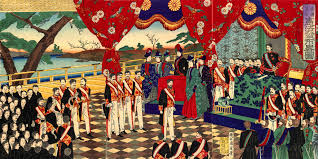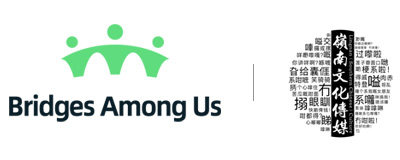Module 1: Origins and Establishment of Qing Rule
1) Historical Background
Timeline Presentation (Key Events)
- Nurhaci and Hong Taiji: Discuss their roles in unifying the Manchu tribes and establishing the Later Jin Dynasty, which later became the Qing.
- Fall of the Ming Dynasty: Highlight key battles and the strategic alliance with General Wu Sangui.
- Establishment of the Qing Dynasty: Focus on the early reign of the Shunzhi Emperor.
Visual Aids
- Maps: Show territorial changes and key battle sites.
- Images: Display portraits of Nurhaci, Hong Taiji, and early Qing emperors.
Relevant Links:
2) Early Consolidation
Lecture Content
- Administrative Reforms: Discuss the integration of Han Chinese officials and the establishment of the Six Ministries system.
- Military Structure: Explain the Eight Banners system and its importance in consolidating Qing power.
- Cultural Policies: Describe the promotion of Manchu culture and policies to control Han Chinese.
Relevant Links:
3) Interactive Activity
Map Activity:
- Instructions
-
- Provide students with blank maps.
- Have them trace the Qing Dynasty’s territorial expansion, marking key regions like Manchuria, Taiwan, and Xinjiang.
- Outcome
-
- Students will gain a visual understanding of the Qing Empire’s geographical changes.
Primary Source Analysis:
- Instructions
- Provide excerpts from early Qing edicts.
- Have students analyze the language and policies to understand the Qing approach to governance and social control.
- Outcome
- Students will develop skills in primary source analysis and understand early Qing administrative strategies.
Relevant Links:
Module 2: Era of the Great Emperors
1) Key Figures
Lecture
Kangxi Emperor
- Policies: Discuss his military campaigns, stabilization efforts, and the Kangxi Dictionary.
- Cultural Contributions: Highlight his patronage of the arts and sciences.
Yongzheng Emperor
- Fiscal Reforms: Explain his efforts to streamline taxation and reduce corruption.
- Administrative Efficiency: Discuss his efforts to centralize power.
Qianlong Emperor
- Territorial Expansion: Focus on his campaigns in Xinjiang and Tibet.
- Cultural Patronage: Highlight his support for the arts and literature, including the creation of the Siku Quanshu.
Visual Aids
- Portraits, artifacts, and excerpts from imperial decrees.
Relevant Links:
2) Cultural Achievements
Group Discussion
- Topics to Cover
- Art and Literature: Discuss notable works and the role of the Imperial Painting Academy.
- Science and Technology: Examine contributions such as the Kangxi Emperor’s surveys and the development of Qing cartography.
Relevant Links:
3) Interactive Learning (Student Presentations)
Instructions
- Assign each student or group an emperor to research.
- Students should cover key policies, military campaigns, and cultural contributions.
- Presentations should include visuals and primary sources.
Outcome
- Students will gain in-depth knowledge of each emperor’s reign.
Role-Play Activity
- Scenario: Simulate a Qing court session discussing policies on taxation, military strategy, and foreign relations.
- Roles: Assign roles such as the emperor, ministers, and generals.
Outcome
- Students will understand the decision-making processes and political dynamics of the Qing court.
Relevant Links:
Module 3: Cultural Flourishing and Social Structures
1) Cultural and Social Dynamics
Lecture
- Examination System: Discuss its role in creating a merit-based bureaucracy and maintaining Confucian values
- Social Hierarchies: Explain the roles of the nobility, gentry, and commoners and discuss the integration of ethnic groups through the Banner system.
Visual Aids
- Show examples of Qing art, calligraphy, and examination papers.
Relevant Links:
2) Traditional Life
Group Discussion
- Topics to Cover
- Confucianism: Discuss its influence on family life, education, and governance.
- Daily Life: Explore aspects of everyday life, including festivals, clothing, and cuisine.
Relevant Links:
Metropolitan Museum of Art: Qing Art
3) Hands-On Activity
Artifact Analysis
- Provide images and descriptions of Qing artifacts such as porcelain, paintings, and textiles.
- Have students analyze the artifacts to understand their cultural and historical significance.
Outcome
- Students will develop skills in art analysis and appreciate the cultural achievements of the Qing Dynasty.
Relevant Links:
Module 4: Conflicts and Foreign Relations
1) Major Conflicts
Lecture
- Opium Wars: Discuss the causes, including British trade policies and the Qing response to opium and highlight major battles and the outcomes, including the Treaty of Nanking.
- Taiping Rebellion: Examine its origins, key battles, and impact on Qing stability.
- Boxer Rebellion: Discuss the causes, the international response, and the consequences for the Qing Dynasty.
Visual Aids
- Use maps and illustrations of key battles, rebellions, and treaties.
Relevant Links:
2) Treaty Analysis
Group Debate
- Divide students into groups representing different perspectives (e.g., Qing officials, foreign diplomats, Chinese rebels).
- Debate the effectiveness and impact of Qing foreign policies.
Case Study
- Provide the text of major treaties like the Treaty of Nanking.
- Have students analyze the terms and discuss their implications on Qing sovereignty and trade.
Outcome
- Students will develop critical thinking skills and understand the complexities of Qing foreign relations.
Relevant Links:
3) Interactive Session
Debate and Discussion
- Organize a debate on the long-term implications of conflicts and treaties on Qing China.
- Topics can include the loss of sovereignty, economic impact, and social changes.
Outcome
- Students will engage in critical analysis and understand the broader impact of these conflicts.
Timeline Activity
- Create a detailed timeline of major conflicts and their resolutions.
- Highlight key dates, battles, and treaty signings.
Outcome
- Students will have a clear chronological understanding of the major conflicts during the Qing Dynasty.
Relevant Links:





Post a comment Cancel reply